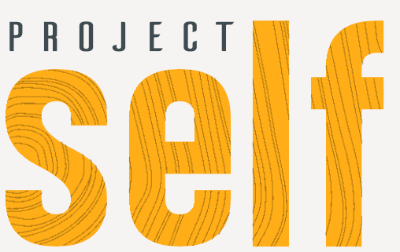Negative feelings may sometimes feel more pervasive to us than positive ones in our daily life, and happiness a tad evasive. Why is this?
Could it be we give negative feelings more significance than positive ones; more weight? That we think there must be something wrong so ruminate, scrutinise and analyse these feelings, taking them into our thinking and so make them worse? Could it be that negative feelings feel deeper, bigger or heavier than lighter ones, so we notice them more as they are more predominant in our consciousness, more concentrated in our physiology?
Essentially our brain and so our nervous system reacts more intensely to unpleasant experiences than pleasant ones. Our thinking also has a negativity bias which increases the negative and also decreases the positive; survival against quality in life. When we feel safe and our system is not in reactive mode, we can relax and respond. That’s when we can open to positive feelings; satisfaction, contentment, feel gratitude and joy. In effect, we need to overcome our own miserable tendencies; show ourselves what we are missing, what we filter out.
When we look at the list of key emotions, which is broadly: anger, fear, sadness, joy and love (you can throw in guilt, grief and shame if you wish), it seems there is a greater range of negative than positive emotions available to us. There is of course a vast expanse of nuanced feelings we experience moment to moment too, including a whole spectrum of feeling nothing (a feeling). Feelings often fluctuate, and are created into response to stimulus, whereas moods are more enduring. Taking in the positive can lift our mood.
We all know how big a feeling love is, in all its aspects, and how an everyday occurrence can become a meaningful (felt) experience as a result. We are fundamentally driven to feel love at our core through needing to connect. When we feel connected we can feel love. We can feel love within our body every day, just through thinking about someone or something, although for various reasons we may become shut down, protected, and so bury an open heart to moments of connection and feel nothing.
And what is this emotion called Joy? What is it to feel joy? How would your describe it? Where does it live in your body?
For me, joy is wrapped up in feeling lift, aliveness and freedom. The silliness and innocence of a small child in the moment. The opening to, filling up the body with, something outside ourselves connecting to some sort of essence within. Essentially, there’s a feeling of energy and expansiveness.
I have experienced that sense of aliveness when a weight I have been carrying has lifted. The squashing of natural spirit alleviated, allowing a flush, a giddy froth of natural light energy to come to the surface from underneath it. My eyes light up and brighten. I feel free, engaged and present. I feel younger. Other people can see it. For me; joy lives behind my eyes.
Joy is natural state of aliveness within. But easily tempered by the layers of duress and concerns we pile on top of it, like coats on a feather. Like logs piled over a spark.
So we need to know where joy lives in our body to search it out. Through this exercise we can still connect to joy, even when feeling sad. It is possible to feel more than one emotion at once and we can know also that when one dominant emotion passes, the natural state of joy or contentment beneath is revealed; re-accessed.
I offer this suggestion to you: that our natural childlike state is joy. Contentment the blue sky ‘that is’ behind the clouds, joy the sun that can flood.
We don’t have to deliberately do things that create joy, we just have to allow ourselves space beyond pre-occupation to experience delight in what is around us. We have to be present. As humans, we are hardwired to look for the negative and so the brain will filter through experience to focus on what is potentially threatening to our contentment. In effect, it looks past good news and dismisses joy as it has no relevance to our safety. It will focus on the problems we need to resolve. The flood of neurotransmitters (or chemical messengers) such as dopamine and serotonin filling the body with a sense of emotional wellbeing, then tempered by anxious, reductive thoughts.
So a moment of delight does not get the full credit of absorption, full flowering and devouring. It is skimmed.
Of course we cannot make ourselves feel joy anymore than we can make ourselves love somebody. But we can chose to point ourselves towards it. Gratitude practice for example, where we might reflect at the end of each day on a few things we may have taken for granted, is a common ‘brain pointing’ exercise; looking for those things we can appreciate. For me this creates a widening, swelling sensation in the body; an inclusiveness, a softening into what I have experienced, alongside a deepening down into the belly; the security and settling of what I have received.
“The little things? The little moments? They aren’t little.” (Jon Kabat-Zinn). Source the tiny delights, the feathers and frolics that lift and catch the heart and store them, absorb them. Know that they live under the ‘dark mood’ coat pile. Turn your attention on, like a torch. Shine into the darkness.
